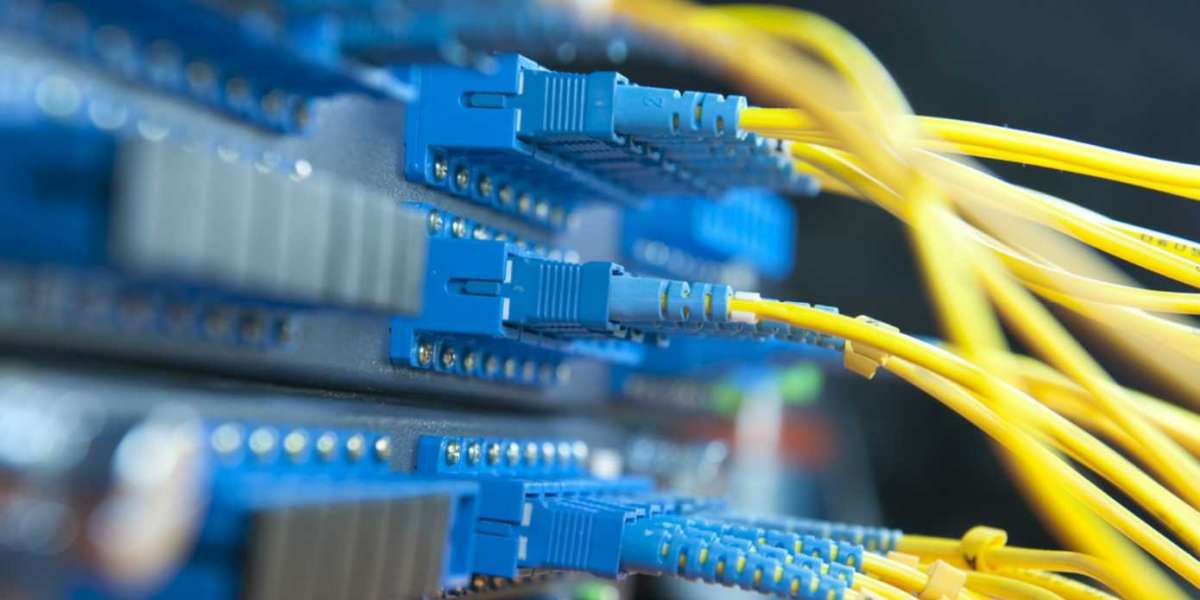The Indian Wired Broadband market is experiencing robust growth and is projected to reach USD 1,846.95 million by FY2031 from USD 605.37 million in FY2023. The country’s young, diverse, and cosmopolitan population, coupled with advancements in communication technology such as introduction of 5G have propelled internet connectivity and have helped to create a thriving market for wired broadband. India is the fifth largest economy in the world with 52% of its population under 30 years of age. This demographic holds a large consumer base that actively uses internet and relies on fast internet for work as well as entertainment.
Also, due to an increasing young population that is quite active on social media platforms such as Instagram and Facebook boost the demand for faster, more affordable, and more reliant internet service providers. Hence, the market is expected to register a strong CAGR of 13.39% for the forecast period between FY2023 and FY2031 due to the growing consumer base.
Moreover, the trend of internet adoption is not limited to the urban areas, rural India is also witnessing a significant increase in internet subscribers than urban areas and metro cities. Government initiatives such as the BharatNet project and Telecom Development Plan bolster Indian government vision to transform its economy into a digital economy and thereby drive the Wired broadband market growth in India.
Digital Transformation of Small Businesses and Rise of Startups
With the rapid advancements in technology and increasing internet penetration, Micro Small and Medium Enterprise (MSME) are embracing digital tools and platforms to streamline operations, expand their reach, and enhance their competitiveness. One key aspect of the digitization journey for small businesses in India is the adoption of online platforms and e-commerce and digital payment solutions. Internet has generated vast opportunity areas for entrepreneurs in India, with more than 84,000 registered startups in 2022, making Indian startup ecosystem the third largest in the world.
Apart from this, in 2022, over 1,300 tech startups were added in India. Hence, this shows that Indian tech startups have introduced disruptive business models and are in forefront to revolutionize various sectors. All these businesses not only rely on the internet for their operations, but their active user base is also able to use their services only via the internet making the population with internet access the prime driver behind their businesses.
Growth of Digital Platforms
The rapid growth of e-commerce platforms and digital payment systems has increased the need for fast and secure internet connections. Consumers in both urban and rural areas require a reliable internet connection to shop online, make transactions, and access digital banking services. E-commerce platforms like Flipkart and Snapdeal have transformed the Indian shopping experience, providing convenient access to a wide range of products. Food delivery startups like Zomato and Swiggy have revolutionized the dining experience, offering doorstep delivery from numerous restaurants. Additionally, fintech startups such as Paytm and PhonePe have simplified digital payments and financial services, empowering millions of individuals to transact securely and conveniently. Furthermore, the demand for content streaming platforms, including video-on-demand services and live streaming platforms, has contributed to the need for broadband in India. Streaming high-quality video content requires a robust broadband connection to ensure uninterrupted playback. The popularity of these platforms has led to a surge in broadband adoption as users seek to access their favorite shows, movies, and live events online. The rapid growth of the digital economy in India, including e-commerce, online services, and digital content consumption, is a significant driver for broadband use.
Download Free Sample Report: https://www.marketsandata.com/industry-reports/india-wired-broadband-market/sample-request
Government Regulations
With more than 50% of its population with access to the internet, the government of India is focused on digital transformation of its economy. Launched in FY2020, the National Broadband Mission with its BharatNet Project saw 1,77,550 Gram Panchayats (GPs) being made service ready with broadband connectivity by June FY2023. Furthermore, optical fiber cable network of approximately 10 Lakh Route Kms was laid by PSUs [Bharat Sanchar Nigam Limited (BSNL), Bharat Broadband Nigam limited (BBNL), RailTel, Mahanagar Telephone Nigam Limited (MTNL), GAIL (India) Limited] as per PM GatiShakti National Master Plan Platform.
Additionally, in FY2022, Telecom Regulatory Authority of India (TRAI) revised minimum download speed for broadband connections to 2Mbps for broadbands. Hence such initiatives by government have only encouraged existing providers to enhance their networks and attracted new players to enter the market, fostering healthy competition. As a result, consumers now have access to a broader range of high-speed broadband options, promoting improved internet experiences, better video streaming quality, faster downloads, and seamless online activities.
Competitors offering Value Added Services to Grab Market Share
There is an ongoing trend among market players to offer value added services like OTT platforms to grab major market share. Moreover, competitors are using the same strategy for market expansion. As per reports released by Telecom Regulatory Authority of India (TRAI) India had 27.83 million wired broadband subscribers in April 2022. Despite the user base in millions, majority of Indian fixed broadband market remains underpenetrated at just 9.1% of Indian households at the end of 2020. India’s wired broadband space is dominated by Reliance Jio, Bharti Airtel and state-owned Bharat Sanchar Nigam Limited (BSNL).
Top five service providers constituted 98.39% market share of the total broadband subscribers at the end of August 2022. With multiple players vying for market share, consumers now have a wider range of options when it comes to selecting a broadband service. This Increased competition among broadband service providers in India has resulted in significant advancements in the quality, availability of internet connectivity and has prompted providers to focus on customer satisfaction, offering improved customer service, flexible plans, and value-added services. For example, Reliance Jio offers not one but multiple OTT subscriptions, including Netflix, Disney Plus Hotstar, and Netflix with select broadband recharge plans.
Surging Demand for Wired Broadband from Rural areas
Rural areas in India are increasingly gaining access to wired broadband owing to increasing digital literacy and awareness among rural communities, there is a growing demand for internet access. Recognizing the market potential, service providers are expanding their networks to tap into this untapped market. Apart from this, the government’s push towards e-governance and digital services has necessitated internet connectivity in rural areas. Access to wired broadband enables residents to access online government services, education, healthcare, and other digital platforms. The ‘Internet in India Report 2022’ pointed out that out of 759 million active internet users in the country, 399 million are from its rural areas. Rural India has seen a more increases in internet subscribers than its urban counterpart in the historical period. Schemes like BharatNet Project that aims to connect remote villages through high-speed broadband connectivity and Pradhan Mantri Gramin Digital Saksharta Abhiyan aid digital literacy and internet adoption in rural centres. Hence, surging demand for wired broadband from rural areas is contributing to burgeoning growth of the market.
Impact of COVID-19
The pandemic had a profound impact on internet adoption worldwide. As governments implemented lockdowns and social distancing measures, people increasingly turned to the internet to work, learn, communicate, and access essential services. This surge in digital connectivity accelerated internet adoption. The Telecom Regulatory Authority of India (TRAI) reported an increase in number of internet users from 718 million in December2019 reaching up to 743 million in March 2020, as most businesses shifted to work from home models and employees and employers both relied on wired broadband services for faster and uninterrupted internet connectivity. During the pandemic, online classes have been attended by children, including those enrolled in primary schools, government schools, and even those residing in rural areas, leading to an additional increase in internet usage. Thus, the demand for Wired Broadband significantly surged owing to COVID-19 Pandemic.
Report Scope
“India Wired Broadband Market Assessment, Opportunities, and Forecast, FY2017-FY2031”, is a comprehensive report by Markets Data, providing in-depth analysis and assessment of the current scenario of the Wired Broadband in India, industry dynamics and opportunities, and forecasts (FY2024-FY2031). Additionally, the report profiles the leading players in the industry mentioning their respective market share, business model, competitive intelligence, etc.
Contact
Mr. Vivek Gupta
5741 Cleveland street,
Suite 120, VA beach, VA, USA 23462
Tel: +1 (757) 343–3258
Email: info@marketsandata.com
Website: https://www.marketsandata.com



